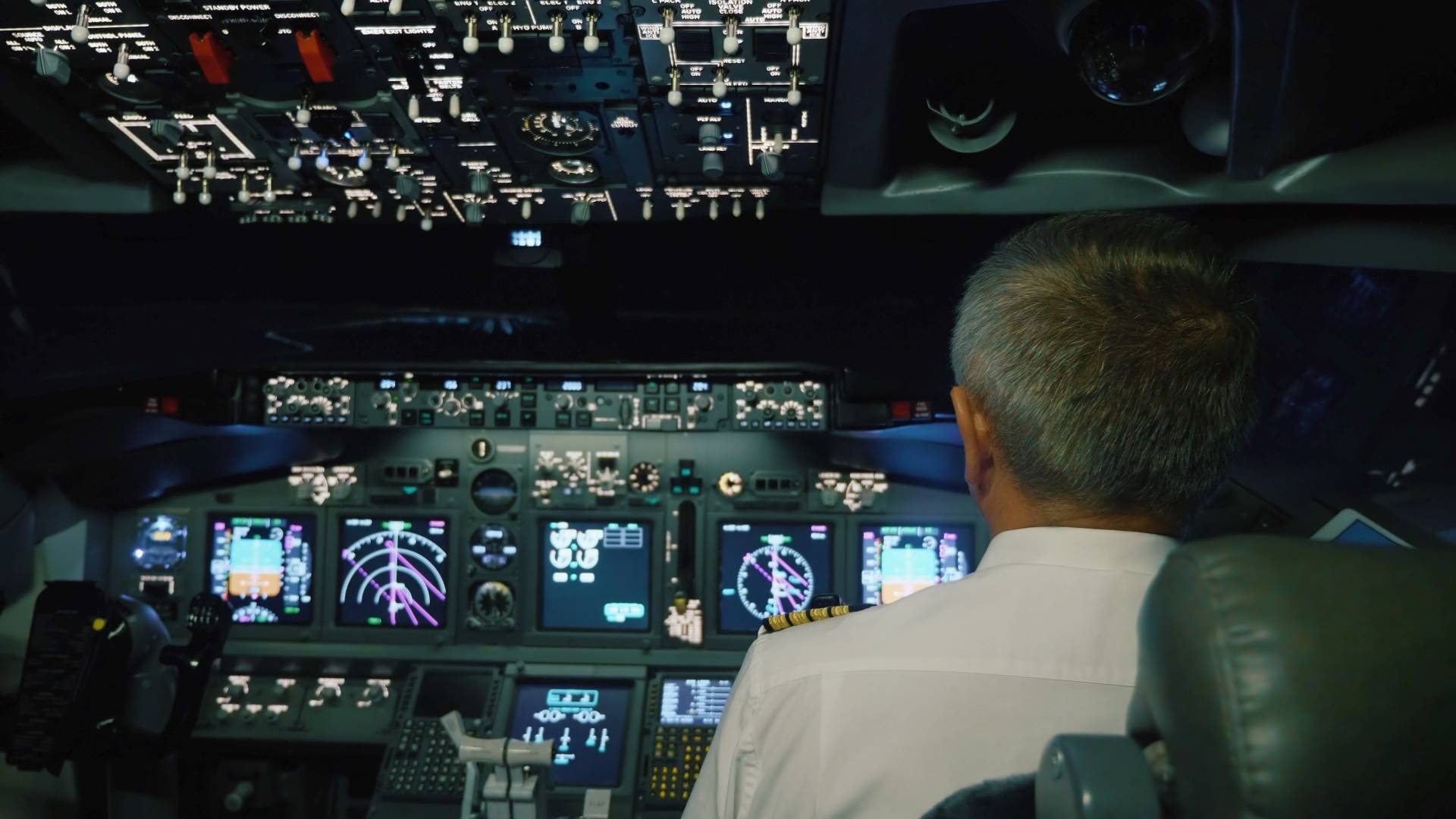As operators, pilots and anyone on the ground supporting flight operations, it is vital we understand the risk of icing in flight, know the signs to look for and the actions you can take to reduce the risk of icing affecting the safety of each flight.
The main actions to mitigate icing risks
Let's start by getting right into the main actions we can all take based on the main risks that have been identified from the Safety Risk Management process and safety intelligence. These are set out for each of the different types of people. This is followed by a deeper dive into the phenomena of icing conditions.
Operations and dispatch
Flight Planning for Winter Weather: Ensure flight paths are designed to avoid icing conditions, severe winter weather and adjust for potential diversions when needed.
Alternate Airport Preparedness: Always have viable alternate airports in case of deteriorating conditions at the destination.
Coordination with Ground Services: Communicate regularly with airport services for up-to-date runway conditions, de-icing availability, and delays.
Flight crew
Thorough Pre-flight Weather Analysis: Pay close attention to weather forecasts, especially for snow, freezing rain, and icing conditions. Always act when aircraft warning systems tell you about icing conditions.
Surface Condition Awareness: Obtain regular updates on runway and taxiway conditions, including contamination from snow or ice.
De-Icing and Anti-Icing Procedures: Ensure that aircraft are properly de-iced and understand the time limits of anti-icing treatments.
Review of Winter-Specific Procedures: Revisit and emphasize winter operation techniques such as braking actions on icy runways and cold weather engine start procedures.
Deep dive on the levels of icing you may encounter
Icing may be described as light, moderate and severe (or heavy). In severe icing conditions, the rate of accretion is such that anti-icing and de-icing may fail to reduce or control the hazard. A change in heading and altitude is considered essential. In moderate icing, a diversion a change in heading and altitude may be required since the rate of accretion is such that there is potential for a hazardous situation. Light icing is usually not a problem unless the aircraft is exposed for a lengthy period. Clear ice is considered more serious than rime ice since the rate of catch must be high to precipitate the formation of clear ice. The seriousness of an icing situation is, of course, dependent on the type of aircraft and the type of de-icing or anti-icing equipment with which the aircraft is equipped or the lack of such equipment.
So can we actually fly in all icing conditions? No, we know this!
Because in another part of your manual it likely says something like this:
CAUTION: Avoid prolonged operation in moderate to severe icing conditions.
So what do we think when we see engine anti ice switching on?
Or Wing anti-ice is switching on. We know that we are in icing conditions because the system tells us we are. We are triggered by the system (if not triggered before by visual clues or clues from the weather radar) that the risk of icing problems increases.
But what if we do not have such a system?
We know that Icing conditions exist when OAT (on the ground) or TAT (in-flight) is 10°C or below, and any of the following exist:
- Visible moisture (clouds, fog with visibility of one statute mile (1600 m) or less, rain, snow, sleet, ice crystals, and so on) is present, or
- Ice, snow, slush, or standing water is present on the ramps, taxiways, or runways.
We also know the clean aircraft concept for take-off. And when I say a maximum of 3 mm of frost you know where and why it is allowed and probably remember the technical questionnaire for your type rating years ago.
What I know as well is that for ice to form there must be moisture present in the air and the air must be cooled to a temperature of 0 C° or less. Aerodynamic cooling can lower the temperature of an airfoil to 0 C° even though the ambient temperature is a few degrees warmer. However, when thetemperature reaches -40 C° or less, it is generally too cold for ice to form. Is that all then? Am I safe in all other conditions? No.
Ice crystal icing is icing when you don’t see visible moisture and the temperature is below -40 C° and at high altitudes. A part of the flight where you least expect it. So what is Ice crystal icing again?
Ice crystal icing
Over the past decade, we have been aware of temporary engine thrust loss, and other engine-related events that occurred in ice crystal icing (ICI) conditions at high altitudes. These events have prompted the release of ADs on various airplane models equipped with General Electric (GE) CF6-80 series engines. Each event was in or near convective weather conditions that included ice crystal icing.
This type of icing does not appear on radar due to its low reflectivity, and neither the airplane ice detector nor visual indications reliably indicate the presence of icing conditions. Therefore, it is often undetected by the flight crew. Flight in these conditions can cause ice crystals to accumulate in the core gas flow path of the engine. In the events leading to those prior ADs, the ice has shed during throttle transients and in the descent phase of flight, causing temporary thrust loss.
Since the beginning of 2013, similar events have now occurred on Model 747-8 and 747-8F series airplanes powered by GEnx-2B engines and Model 787-8 airplanes powered by GEnx-1B engines. The new events that prompted this AD, however, have occurred during the cruise phase of flight and caused permanent damage (beyond maintenance manual limits) to the engine compressor. In all thrust loss events, data indicate that ice crystals entered and collected in the initial stages of the compressor. Engine temperature data indicate small ice accretions were shed through the core of the engine.
All of these ICI events occurred during cruise at 33,000 feet or above, either within or after the airplane traversed a large Mesoscale Convective System (MCS). MCSs are areas where several thunderstorms have merged, with a continuous cloud larger than 100 kilometres (62 miles) across.
Within or near MCSs, ICI events have occurred where convective activity has driven a significant quantity of moisture, in the form of ice crystals, to altitudes at or above the tropopause. ICI events tend to occur in warm geographic locations.

Research has shown that strong convective weather (thunderstorm activity) can lift high concentrations of moisture to high altitudes where it can freeze into very small ice crystals, perhaps as small as 40 microns (the size of flour grains). These are the crystals that can affect an engine when flying through convective weather. The industry is using the phrase "ice crystal icing" to describe these icing conditions, and to differentiate it from icing conditions due to supercooled liquid.
Ice Crystal Icing mainly causes issues in the engines. NASA research tells us why:
Researchers hypothesize that ice particles enter the engine and bounce off surfaces colder than freezing (inlet, fan, and spinner). Once reaching surfaces warmer than freezing in the core, some of the small particles can melt and create a film of water on the surface to which additional incoming ice crystals can stick. This process gradually reduces the temperature of the surface until ice can begin to build up.
Effects of ice crystal icing
The following table summarizes ice crystal icing effects on the engine:
| POWER-LOSS TYPE | DESCRIPTION | EFFECT | RECOVERY |
| Surge/Stall* | Ice shed into compressor drives engine to surge, then stall causes rotor speeds to decay, and reducing airflow while combustor remains lit. | Thrust loss and high exhaust gas temperature. | Throttle to idle. Cycling of the fuel switch may be required to clear some stalls. |
| Flameout* | Ice shed into the combustor quenches the flame. | Thrust loss and all parameters dropping. | Ignition. Many events self-recover due to auto-relight or having the ignition already on. |
| Engine Damage | Engine blades become damaged as shed ice impacts them. | Typically no effect at time of initial damage, but damaged blades may fail later causing vibration or engine stall. | As appropriate — refer to Quick Reference Handbook |

Imagine you are in cruise at night enjoying your coffee and engine vibration starts. How can you prevent a possible startle effect? By knowing what it is and how to recognize it. As ice crystals are most frequently found in areas of visible moisture and above altitudes normally associated with icing conditions. Their presence can be indicated by one or more of the following:
- Appearance of rain on the windshield at temperatures too cold for liquid water to exist. This is due to ice crystals melting on the heated windows (sounds different than rain)
- Airplane TAT indication remains near 0 degrees C due to TAT probe icing
- Areas of light to moderate turbulence
- In IMC with:
- No significant airframe icing and
- No significant radar returns at airplane altitude and
- Heavy precipitation below the airplane, identified by amber and red returns on weather radar
- Cloud tops above typical cruise levels (above the tropopause)
- Smell of ozone or sulfur
- Humidity increase
- Static discharge around the windshield (St. Elmo’s fire)

Where I said earlier that icing detection system tell you when you have icing conditions, those systems do not detect ice crystal icing, the system is designed to detect supercooled water only, and normal icing conditions. Now you are encountering Ice Crystal Icing or you suspect it, what can you do about it? We know Ice Crystal Icing is found above convective systems, so descend is not advisable due to turbulence considerations and increasing icing due to going into an area of supercooled liquid. Basically you want to minimize the time above amber and red weather radar returns, so exit the area laterally. Fan blade ice removal procedures have no effect and you may encounter engine vibrations. When clear of the area engine vibrations should decrease.
Concluding this article, I hope you refreshed the risk on icing and next time you encounter visible moisture or flying above convective systems you refresh your thoughts again about risks on icing.
Further reading and watching
For more information to read about icing click on the following links:
- Skybrary - Avoidance of High Altitude Icing.
- Skybrary - Effects of High Level Ice Crystal Icing.
- NASA Video - Theory of Ice Crystal Icing.
- Mighty MKL - Adverse Weather Video
For info; EASA to note
https://www.pprune.org/11715898-post234.html
The discussion about severe icing indicates that operators should not be expected to deduce definitions - open to a wide range of interpretations.
Furthermore, operators are not required to reference some of the relevant documents, e.g. CS 25
Please log in or sign up to comment.